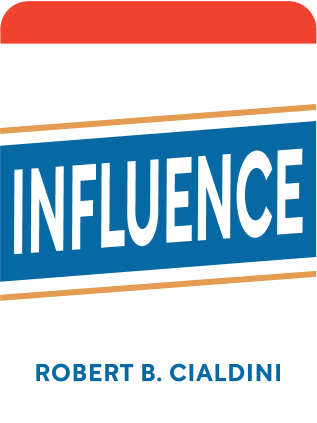

This article is an excerpt from the Shortform summary of "Influence" by Robert B. Cialdini. Shortform has the world's best summaries of books you should be reading.
Like this article? Sign up for a free trial here .
Do you feel safer going out at night when there are people around? Have you heard of the bystander effect? Pluralistic ignorance shows there might not be safety in numbers.
Pluralistic ignorance is a phenomenon in which a group of people behaves contrary to the norms and standards of most of the individual members of that group. The bystander effect is a type of pluralistic ignorance. Learn how to counter the bystander effect.
What Is Pluralistic Ignorance?
In unclear or ambiguous situations, we’re more likely to use the actions of others to model our own behavior. This can lead to a phenomenon called pluralistic ignorance. In these situations, a group of people as a whole acts in a way that most of the individual members of that group would not agree with on their own.
It really comes down to the difference between how a person acts and how people act. Pluralistic ignorance explains the bystander effect, when bystanders fail to help individuals in need.
The Story of Kitty Genovese: A Pluralistic Ignorance Tragedy
In 1963, in the Kew Gardens section of Queens in New York City, a young woman named Kitty Genovese was murdered. While undeniably tragic, what made her murder internationally famous were the circumstances under which it occured.
Genovese was stabbed by her killer over the course of a prolonged 35-minute attack, during which she was audibly in excruciating pain and screaming for someone to help her. Several neighbors in the crowded urban environment either saw or heard portions of the attack. Yet many of them failed to intervene.
The media seized on apathy as an explanation for the neighbors’ behavior. According to this theory, we were becoming a “Cold Society” in which people were unwilling to lift a finger to help each other in an hour of need. Given the attack’s setting in New York City, pundits pointed to apathy as a regrettable feature of modern urban life. They warned that episodes like this would only become more common as the country became more urbanized.
But was this really what was going on? Did these witnesses simply shrug their shoulders at Genovese’s plight? Or was something else going on? Psychologists Bibb Latane and John Darley begged to differ.
They argued that some individual witness struggled to help the victim precisely because they knew there were so many other witnesses. There was a diffusion of responsibility with the bystander effect: everyone assumed that someone else would intervene or call the police, so no one actually did. The knowledge of fellow witnesses lowered the psychological cost of non-involvement for each individual.
They also argued that uncertainty drove the witnesses’ actions (or non-actions). This created pluralistic ignorance.
As we mentioned above, the Social Proof Principle thrives in conditions of uncertainty and ambiguity. In these scenarios, we strongly model our behavior on what others are doing.
In Latane and Darley’s analysis, this created a feedback loop with deadly consequences for Genovese. In the confusing and chaotic atmosphere of a crowded urban environment, Geneovese’s screams could have been any number of things: drunken exuberance, or a lover’s quarrel maybe, neither of which would warrant intervention from a stranger.
Everyone hearing it could plausibly claim that they didn’t know what was really going on. So they looked to everyone else to guide their own behavior. And since everyone else was doing nothing, each person thought that the screams were a non-emergency. “After all, if this were an emergency, at least someone else should be looking alarmed and calling the police.” But if everyone is thinking this, no one is acting, and so everyone believes it’s a non-emergency. So with the bystander effect, the group as a whole made the collective decision to let Genovese die.
Shortform note: Subsequent investigations of the murder have discredited some of the early mythology when first studied in the 1960s. Far fewer people heard parts of the attack than had been previously thought. None of them witnessed it in its entirety. At least two neighbors did call the police. And, in fact, Genovose died in the arms of an elderly neighbor who came down to help her when she heard Genovese’s anguished cries.
The story is still useful as a demonstration of the bystander effect, so we’ve opted to keep it in the summary, but we had to point out the facts have changed quite a bit since Influence was published. If you’re interested in learning more, check out this article from the American Psychological Association on pop psychology’s “tall tales.”)
Safety in Numbers? Think Again
The Genovese story shows the folly of the idea of “safety in numbers.” With the powerful force of pluralistic ignorance working against you, you’re probably in greater danger from the bystander effect in a large group than you are in a small group.
As proof, Darley and Latane staged an experiment in which a college student pretended to have a seizure. The student received help 85 percent of the time when there was only a single witness. But he received help only 31 percent of the time where there were five bystanders.
Don’t Ask People for Help, Ask a Person
On an individual level, then, people are not apathetic. Quite the contrary, they’re remarkably eager to help. People quickly leap into action once they realize an emergency is underway.
The lesson is clear. Single out an individual if you are ever in need of help in a public place. General, non-directed cries of “Help!” can too easily be sucked into the vortex of the bystander effect. People will either be able to tell themselves that there’s no real emergency or that someone else will handle it. Don’t let diffusion of responsibility and uncertainty take root. Call out, “Hey you, in the red cardigan. I need help, go call 911 now!”

———End of Preview———
Like what you just read? Read the rest of the world's best summary of Robert B. Cialdini's "Influence" at Shortform .
Here's what you'll find in our full Influence summary :
- How professional manipulators use your psychology against you
- The six key biases you need to be aware of
- How learning your own biases will help you beat the con men around you






